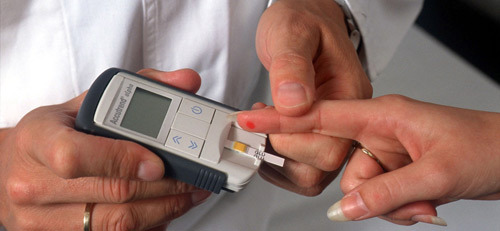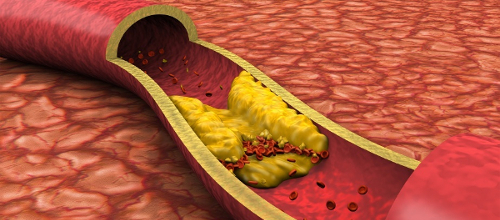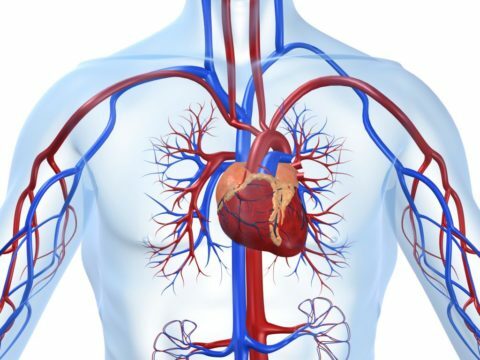Diabetes is a negative phenomenon for the human body, especially when it developed into a second type. It is a disease that affects almost all organs. The need for timely diagnosis and compliance with all the recommendations of the attending physician is due to the general health care, which, due to the large number of possible complications, can be severely undermined.

Non-insulin-dependent diabetes mellitus with multiple complications practically does not respond to treatment. Avoid the manifestation of such complications is quite possible, you just need not to start the disease. But it is also necessary to know about the influence that diabetes can have on the body.
Causes of
The main sign of development in a person with diabetes is high blood sugar. So, prolonged hyperglycemia without proper treatment can cause damage to blood vessels. And since usually the smallest vessels suffer, the problems, first of all, arise with microcirculation. Such vessels permeate the entire body, so complications can occur in many organs.
The disease is especially severe during diabetes mellitus type 2, so sooner or later complications will make themselves felt. But according to the doctors' observations, this happens about 10-15 years after the diagnosis and provided that the attitude towards the treatment on the part of the patient was frivolous. The thing is that if a patient does not follow the blood sugar level and does not follow the recommendations of a specialist, this leads to a state of prolonged decompensation of diabetes( high sugar level).And already this condition gives rise to the process of complications development.
Nature of complications
All complications of diabetes can be divided into acute and chronic. The first group includes diabetic ketoacidosis and hyperglycaemic coma. These phenomena require an early referral to the doctor, as the consequence may be loss of consciousness or death. Chronic includes atherosclerosis of vessels and disorders of nerve conduction, which can affect the kidneys, eyes, legs, or lead to a heart attack or stroke.

With regard specifically to the complications of type 2 diabetes, they often have a hidden development, which complicates their timely diagnosis. This requires additional research. If the complications are manifested, then their treatment becomes rather problematic, and development becomes even more unfavorable. Therefore, patients who have developed type 2 diabetes should follow their own condition even more carefully, and especially the level of sugar. Below you can see the most common complications.
Kidney
Disturbance of blood circulation in small vessels located in the kidneys can lead to a deterioration in the filtration of urine. In it, after that, those substances that are not present in the urine of a healthy person( protein, glucose) can be seen.
Kidney failure can lead to kidney failure. Signs of such complications are arterial hypertension, edema, and also an obvious increase or decrease in the amount of urine.
In order not to bring your condition to critical, diabetics should do ultrasound of the kidneys at least once a year. If you miss the development of kidney failure, you may eventually need even a kidney transplant or chronic hemodialysis.
Cardiovascular system
Complications of type 2 diabetes mellitus are basically reduced to the work of blood vessels. This can not but affect the main indicator of their work - blood pressure. It is violations of this indicator can be detected on a timely basis and pay attention to the doctor.

The upper column readings of 140 mm Hg are considered inflated figures for pressure.and above, and the lower one - 85 mm Hg.and higher. An even greater burden on this system is exerting weight, so all patients with diabetes are recommended to switch to a special diet. This allows not only to reduce weight, but also to reduce the indication of blood pressure.
In hypertension, it is also recommended to reduce salt intake to 1 tsp.per day. In the case when the pressure can not be controlled independently, the doctor can prescribe special preparations for these purposes.
Vision
One of the most unpleasant and quite common complications in diabetes is a violation in visual acuity. His first sign is the retinal damage, because of this sharpness and begins to decline. In time to notice this process helps the annual eye examination from the oculist.
So, a timely check of the fundus, which most accurately shows the changes, can help save a person's vision. One should not forget that the risk of blindness in a diabetic patient is much higher than that of a healthy population. Also, diabetics are more prone to developing cataracts.
Lower extremities of
The development of diabetic foot becomes the most complicated complication in type 2 diabetes. Such damage to the tissues of the feet is accompanied by a disturbance in the nutrition of the tissues of the legs, which can lead to their deformation and the development of ulcers. This again is associated with violations in the blood vessels in the lower extremities.

One of the most common causes of deformities of the feet are hypertension, overweight, smoking. The main sign of the appearance of this complication is the occurrence of ulcers. Their appearance is largely influenced by mechanical factors of influence: rubbing with shoes, pressure on the feet, other injuries. In open wounds can easily get an infection, but from this already go to infection. Ulcers are of different localization and depth of lesion. It depends on many factors.
It is important to know that untimely treatment of such wounds can lead to amputation. The good news here is that about 70% of cases of foot injury are excellent for treatment. Again, it should be remembered that proper treatment of diabetes reduces the risk of developing such ulcers.
Acute complications of
Separately, the most dangerous complications for diabetes are ketoacidosis and hypoglycemia.
Ketoacidosis is manifested in the increase of ketone bodies in the patient's blood. In this case, damage to the nerve cells can occur, and even a coma may occur. This complication is a consequence of non-compliance with the recommendations for treatment, including diet. Signs of the development of ketoacidosis are dry mouth, thirst, weakness, headache and the appearance in the mouth of the smell of acetone. If such symptoms are seen, you should immediately call a doctor. Treatment is necessarily stationary.
Hypoglycemia is commonly referred to as a sharp drop in blood sugar. This is approximately to the values of 3-3.5 mmol / l. In view of the danger of disrupting the nutrition of brain cells, such a sharp decrease can lead to death. To lead to this may be an overdose of insulin, increased physical activity, excessive use of alcohol, as well as the use of drugs that significantly reduce blood sugar.
Primary symptoms of hypoglycemia are numbness of the lips, trembling in the hands, hunger, dizziness, cold sweat, weakness, pallor. When they are detected, the patient should be given something containing easily assimilated carbohydrates. You can just drink a few mugs of very sweet tea. The main principle of treatment is to raise blood sugar to normal.
Acute complications of diabetes are dangerous for their consequences, but not very common. Avoid their manifestation and any other complications is quite realistic, following simple rules of treatment. Therefore, do not neglect the right dietary diet and the recommendations of the treating doctor and your health will be in perfect order, as far as possible.



